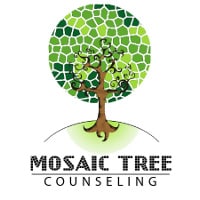Posttraumatic Stress Disorder (PTSD)
PTSD is caused by experiencing a serious threat of physical injury or death, or sexual assault. PTSD cannot be diagnosed until one month has passed since the traumatic incident but acute stress syndrome (similar symptoms) can be diagnosed during the first month (Gore, 2018). The condition may last months or years, with triggers that can bring back memories of the trauma accompanied by intense emotional and physical reactions (Mayo Clinic, 2017).

Symptoms of posttraumatic stress disorder (PTSD) include persistent re-experiencing of the event: intrusive thoughts related to the traumatic event, nightmares or distressing dreams, persistent or recurrent involuntary memories, dissociation (including flashbacks) and intense, negative emotional or physiological reaction on exposure to reminders (traumatic triggers). At times individuals may experience avoidance of traumatic triggers or of thinking/talking about the experience. Negative alterations in cognition and mood: inability to recall important aspects of the trauma; persistent negative beliefs and expectations about oneself, others, and the world; inappropriate blaming of oneself for the trauma; exaggerated negative beliefs about the consequences of the trauma; persistent negative emotional state (sadness, horror, guilt); a paucity of positive emotional experiences; loss of interest or participation in important activities; and detachment from people. Other symptoms include irritability, problems with sleep or concentration, increased startle reaction, increased vigilance for potential danger, self-harming acts, or recklessness. Insomnia is a common problem for patients with PTSD. It may be treated though reinforcing sleep hygiene and CBT. Prazosin is commonly prescribed to decrease trauma-related nightmares (Gore, 2018). High levels of emotional support and help with basic needs for shelter, food, clothing, and economic issues likely decrease the risk of PTSD.
Treatment includes different types of trauma-focused psychotherapy as well as medications to manage symptoms (Mayo Clinic, 2017). Brief cognitive-behavioral therapy (CBT) started within a few weeks of a traumatic event has been shown to decrease the rate of subsequent PTSD (Gore, 2018). We use a variety of different techniques, such as, but not limited to: trauma-focused therapy, CBT, psychoeducation, safety planning, mindfulness, and more, dependent on the individual’s needs,
Gore, T. A. (2018). Posttraumatic Stress Disorder. Medscape. Retrieved from https://emedicine.medscape.com.
Mayo Clinic (2017). Posttraumatic Stress Disorder. Retrieved from https://mayoclinic.org.
https://www.deseretnews.com/article/865665851/National-program-helps-soldiers-learn-to-cope-with-PTSD.html
Therapy Modalities
Abuse & Neglect
ADHD
Anxiety
Bipolar
Career Counseling
Communication Difficulties
Couples Therapy
Depression
Eating Disorders
Employee Assistance
Impulsive Behavior
Obsessive Compulsive Disorder (OCD)
Oppositional Defiant Disorder (ODD)
Play Therapy
Posttraumatic Stress Disorder (PTSD)
Self Esteem
Self Mutilation
Shop
Social Skills
Request More Information

